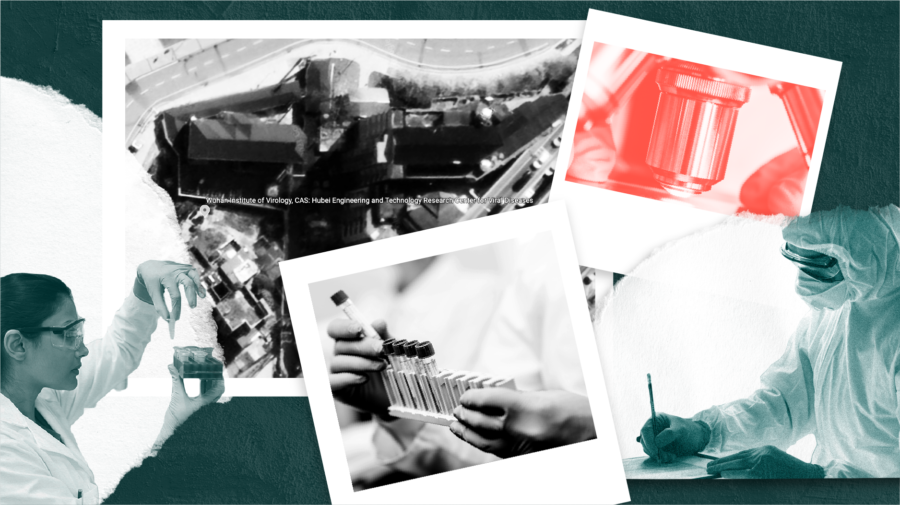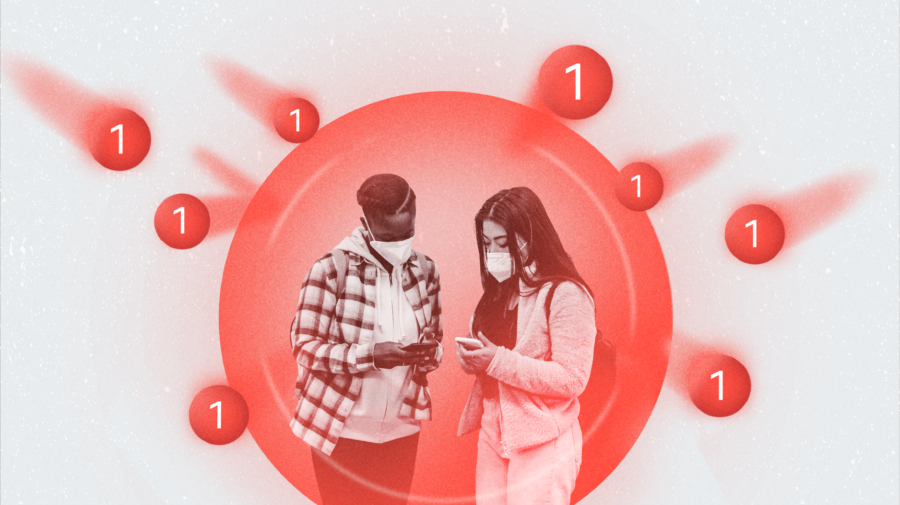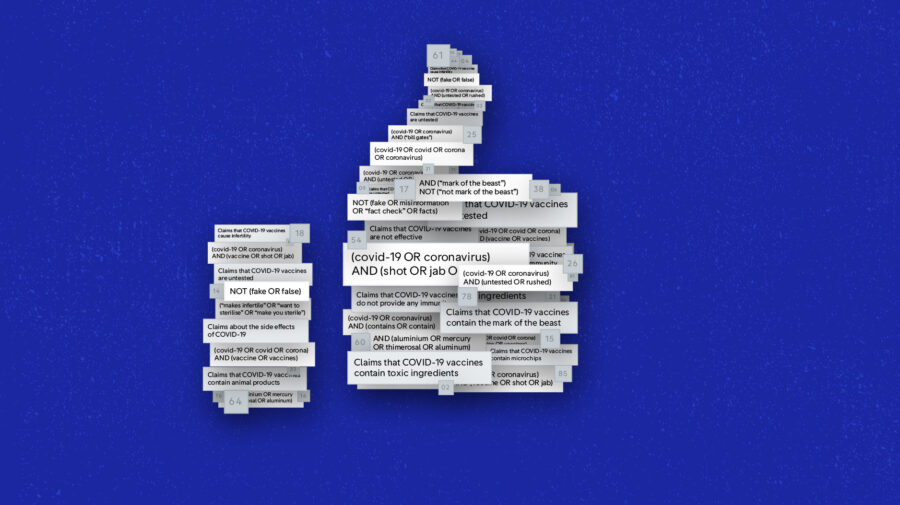Over the past few weeks, the unproven lab-leak theory that the SARS-CoV-2 virus might have originated from a Wuhan lab (China’s Wuhan Institute of Virology) have crept back into the headlines.
Uncertainty about Covid-19’s origin and media treatment of the various theories have not only drawn criticism of news organizations, but have also placed audiences in a murky environment where they are left on their own to untangle theories from political influences and conspiratorial disinformation.
What can we as journalists and researchers learn from this, to ensure that this investigation — and similar ones in the future — are properly covered without contributing to more public confusion? Here are First Draft’s tips on best practices for reporting on the so-called lab-leak theory, a sensitive subject with major geopolitical implications.
Be upfront about the ongoing and ever-changing nature of the investigations
Be clear to your audience that the investigation into the virus’ origin is ongoing, and new discoveries or evidence can emerge from time to time. Incremental releases of evidence should not be treated as definitive proof for a theory, as doing so can mislead readers into attributing too much confidence to one theory and discrediting others.
When the first phase of the World Health Organization’s investigation concluded in February, investigators stated that the possibility of the coronavirus leaking from the Wuhan lab was “extremely unlikely” based on current evidence. A number of scientists, including investigators from the WHO team, signed a statement in The Lancet that to some degree ruled out the lab-leak hypothesis, citing studies that had “overwhelmingly concluded” the virus emerged from wildlife. However, this was far from being a definitive conclusion, as others disagreed. Shortly thereafter, a different group including scientists called for a new investigation, saying the WHO report was constrained by structural limitations. This was not decisive evidence in favor of either theory, but rather an indication that more information was needed. Outbreak-origin investigations can often take years and are complicated for a slew of reasons. It took 14 years to confirm where the 2003 SARS outbreak originated; it was also caused by a virus in the coronavirus family. The origin of the 2013-2016 Ebola outbreak has yet to be determined.
Thus, being clear about the ongoing possibility that scientific consensus can change helps prepare readers if or when it happens. This creates an understanding that such shifts are natural, even common, in the field of science, and are not evidence of a conspiracy. For the most part, audiences are unused to scientific uncertainty — we often do not get to see an entire fact-finding process play out in front of our eyes, only the conclusion.
Be clear about political influences surrounding the Wuhan lab and virus origin
Major investigations such as this one have and will be subject to political pressures and have an impact on geopolitical dynamics. Unfortunately, public scrutiny often comes to the detriment of the scientific work, so beware of both the pressures that can influence your reporting, as well as how your work might shape the debate.
In the unique political environment of 2020, media organizations pre-emptively shifted toward discounting the theory that the virus might have originated in the Wuhan lab before any official announcement had been made. In particular, when the theory was repeated by former US President Donald Trump, mainstream media widely criticized it for its conspiratorial and Sinophobic tone. But this overshadowed legitimate scientific concerns for the broader public, and for Trump supporters signaled yet another reason for distrust toward the media.
However, in light of President Joe Biden’s call for a renewed probe into the coronavirus’ origin, new reports that three staff members of the Wuhan lab sought hospital care in November 2019 before the first outbreak was reported, and recently released email correspondence from Dr. Anthony Fauci, news organizations are now addressing the theory in a vastly different tone. This turn manifested in both op-eds from the media admonishing peers about how badly they “got it wrong” as well as explainers about why the theory matters now.
What makes this theory challenging to report on is that it is inextricably tangled in the geopolitical dynamics of US-China relations and American domestic politics. Furthermore, irresponsible reporting can shift the onus and political pressure onto scientists, and harm efforts to reach a definitive conclusion on the virus’ origin. To report effectively is to be able to untangle the relationship between conspiratorial and racist actors abusing the theory for their own means, and the facts underpinning the credibility of the theory in the scientific community.
Be aware of the risks of amplification
At this stage, media reporting about the theory and investigation has become something of an ouroboros — a snake eating its own tail. Articles about the lab-leak theory focus on the angle that major public figures and the media are talking about the theory. However, this in itself does not always warrant further reporting.
When reporting on ongoing investigations, following this line of reasoning can also run the risk of amplifying unproven theories from unqualified individuals.
In the case of the lab-leak theory, a fringe anti-Chinese Communist Party group linked to former Trump White House adviser Steve Bannon initially circulated a document in February, claiming that it was evidence the Chinese military had floated the idea of creating bioweapons from coronaviruses back in 2015. The document was subsequently picked up by a national Australian newspaper in May, spotlighted by a journalist who claimed this was evidence of a conspiracy by the Chinese military. Around this time, Dr. Li-Meng Yan, a well-known figure in the anti-CCP group who had been pushing the bioweapon theory since early 2020, also promoted the document in an interview with conservative website Newsmax, falling back on her credentials as a virologist, despite already having been discredited by numerous institutions. It spread from there to a slew of Indian and British outlets.
In reality, the document was a book, and while published by a Chinese military publisher, had no official military backing. Also, it said something entirely different — it explored the possibility that the 2003 SARS outbreak was a bioweapon introduced TO China — and was not a secret at all. The book is even available for purchase online. These careless reports add to an already murky and tense atmosphere surrounding the origin of the coronavirus as well as the process of finding it.
Be precise in wording, especially in headlines
It is absolutely crucial to be precise, clear and specific about what exactly is being investigated, and what the theories are.
While the current US-led investigation is concerned with whether the virus emerged from human contact with an infected animal or was accidentally leaked from the Wuhan lab, online reactions were more interested in the possibility that the virus could have been deliberately created or modified at the lab, even suggesting it could have been a bioweapon. Indeed, experts have pointed out that a virus accidentally being leaked from a lab is within the realm of possibility, but the suggestion that the virus was engineered is “so implausible as to have drifted well into conspiracy theory territory.” However, the two vastly different ideas have been referred to interchangeably, and misleadingly, as the “lab-leak theory,” both in the context of further investigation and in debunking. It has thus become increasingly difficult to determine which precise aspect of the lab-leak theory, and its plausibility, is being discussed. Investigations can also be misinterpreted as a fault-finding process and exacerbate already-tense political relations, and can be manipulated by harmful actors to suit their own narratives.
Special attention should be paid to the crafting of headlines. Headlines are the first — and sometimes only — interaction social media users have with the news item. As the press churns out explainer after explainer about why the public should pay attention to the theory again, headlines that do not specify the accidental nature of the possible leak run the risk of creating unfounded credibility for the bioweapon theory. Examples of well-crafted headlines include Bloomberg/Quint’s “Biden Renews Virus Origin Probe That’s So Far Come Up Empty,” which telegraphs to the reader that the leak theory has so far been unproven; as well as The New York Times’ “Scientists Don’t Want to Ignore the ‘Lab Leak’ Theory, Despite No New Evidence,” which includes both a signal that the theory is worth paying attention to, citing an authoritative source, and the context that no more weight should be given to it at the moment as there is a lack of new evidence.
Think about whether anything needs to be written at all
Lastly, consider whether it’s necessary for your organization to publish anything about the theory at all. Repeating it without new, concrete evidence will at best not help advance the conversation, and at worst can create the impression that the theory carries more weight than it does. The best way to serve your readers is to lay out all the facts and remind them that the investigation is in progress, and no definitive conclusion has been reached.
Stay up to date with First Draft’s work by becoming a subscriber and following us on Facebook and Twitter.









